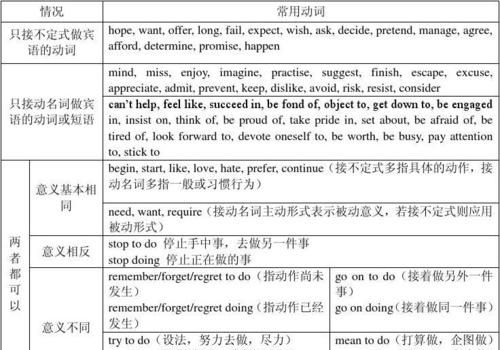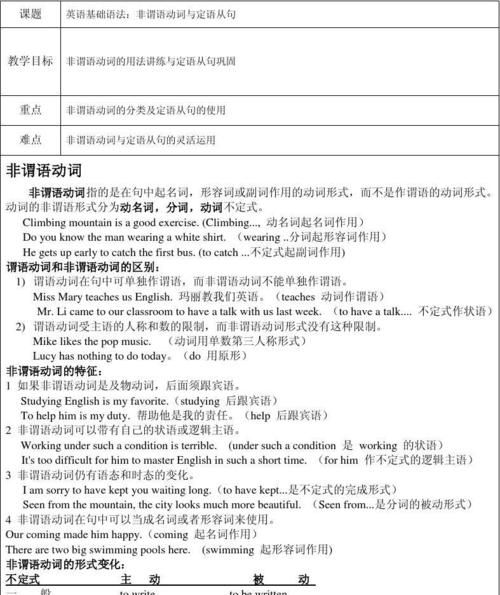本文目录
非谓语动词作定语简单的例句
1.The boy standing at the door is called Tom.
standing at the door
2.The boy called Tom is standing at the door.
called Tom
3.The boy has a book to read.
to read
第二行的为非谓语动词:现在分词,过去分词以及to do 不定式 作后置定语,还可以做前置定语:
4.The working people are kind.
working

非谓语动词在句中做什么成分
非谓语动词在句子中除了不能单独作谓语,几乎可以充当其它所有成分,即:主语、表语、宾语、定语、同位语、状语和补语等。
1, 作主语、表语。如:
To see is to believe. 百闻不如一见。
Saving is having. 节约即才会拥有。
(非谓语动词To see,Saving作主语;to believe 和having 作表语)
2, 作宾语。如:
Tom wanted to go, too. 汤姆也想去。
I suggest doing it in a different way. 我建议换一种方法做此事。
(非谓语动词to go和 doing作宾语)
3, 作定语。如:
The next train to arrive was from Beijing. 下一列到站的火车是从北京开来的。
Everybody was at his fighting post. 每个人都守在自己的战斗岗位上。
(非谓语动词to arrive和 fighting 作定语,分别修饰train和post)
4, 作同位语。如:
He gave the order to start the attack. 他下达了开始进攻的命令。(to start 和 名词 order 同位)

非谓语动词作定语句子
I got a lot of work to do
to do就是典型的非谓语动词做后置定语
其他的还有.I have something to say.
I need to work hard to accomplish my goal

非谓语动词做后置定语的句子结构
非谓语动词做后置定语的句子有:
1、I like his idea to go for a picnic. 我喜欢他去野炊的主意。
2、I look at the girl sitting on the grass. 我看着坐在草地上的女孩。
3、The boy standing there is my son. 站在那里的那个男孩是我儿子。
4、The first text books written for teaching English as a foreign language came out in the 16th century. 第一本作为外语教学的教科书出现在16世纪。
5、She is always the first (one) to come and the lastto leave. 她总是第一个来,最后一个离开。

扩展资料
动词的非谓语形式,一般包括动名词、不定式、现在分词、过去分词。
1、doing:正在进行的动作,并且/或者是名词的主动语态。
单个-ing作定语前置,表示名词的性质、特征或用途;单个-ing作定语后置,表示强调动作。
-ing短语作定语一般后置。例如,a sleeping car,the boy standing there。
-ing作定语一般要求其动作与谓语动词所表示的动作同时发生或在说话时该动作正在进行,否则要用从句作定语。
2、being done:正在进行的动作,并且是名词的被动语态。
3、done:已经完成的动作,并且/或者是名词的被动语态。
以上就是关于非谓语动词充当定语例句,非谓语动词作定语简单的例句的全部内容,以及非谓语动词充当定语例句 的相关内容,希望能够帮到您。

